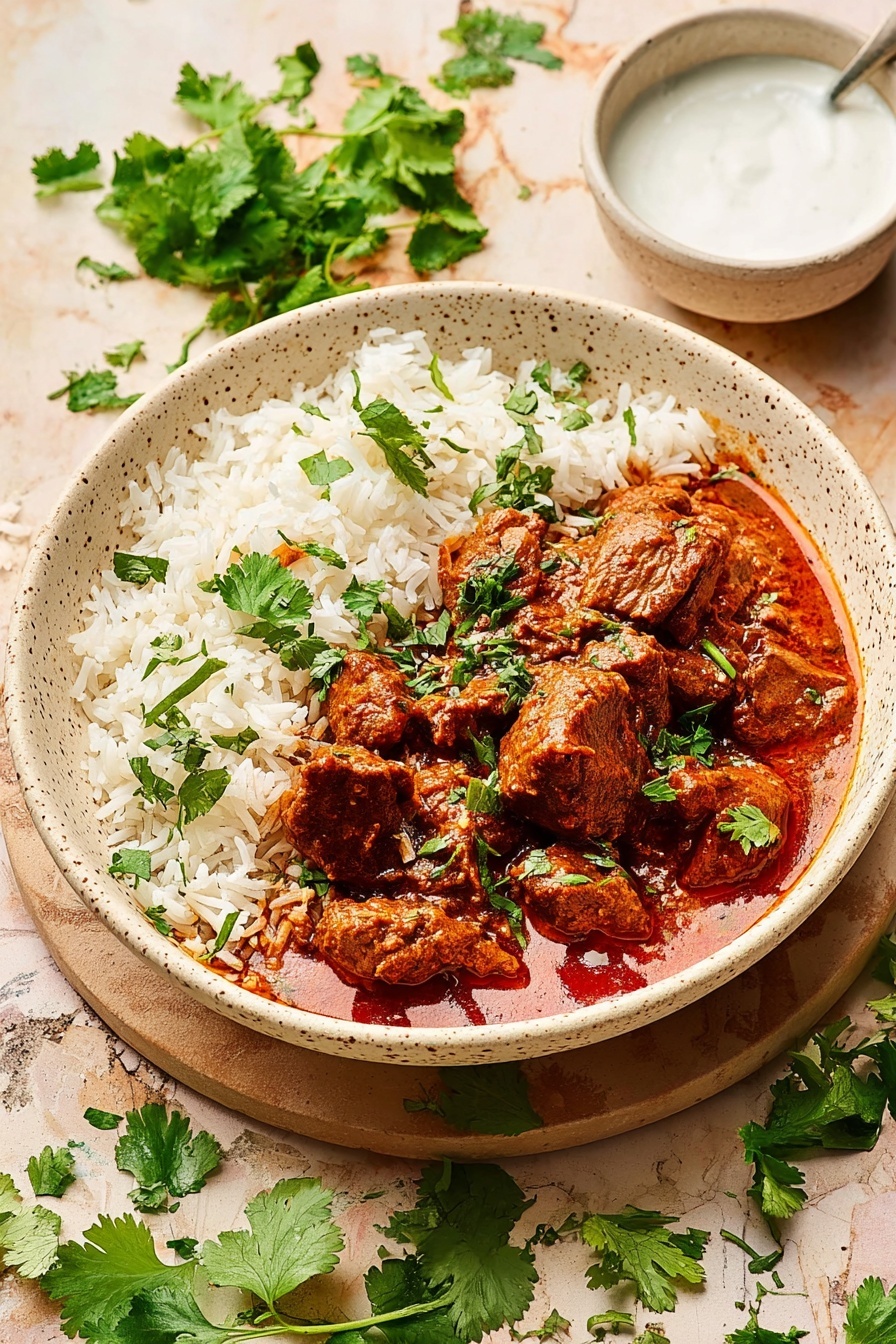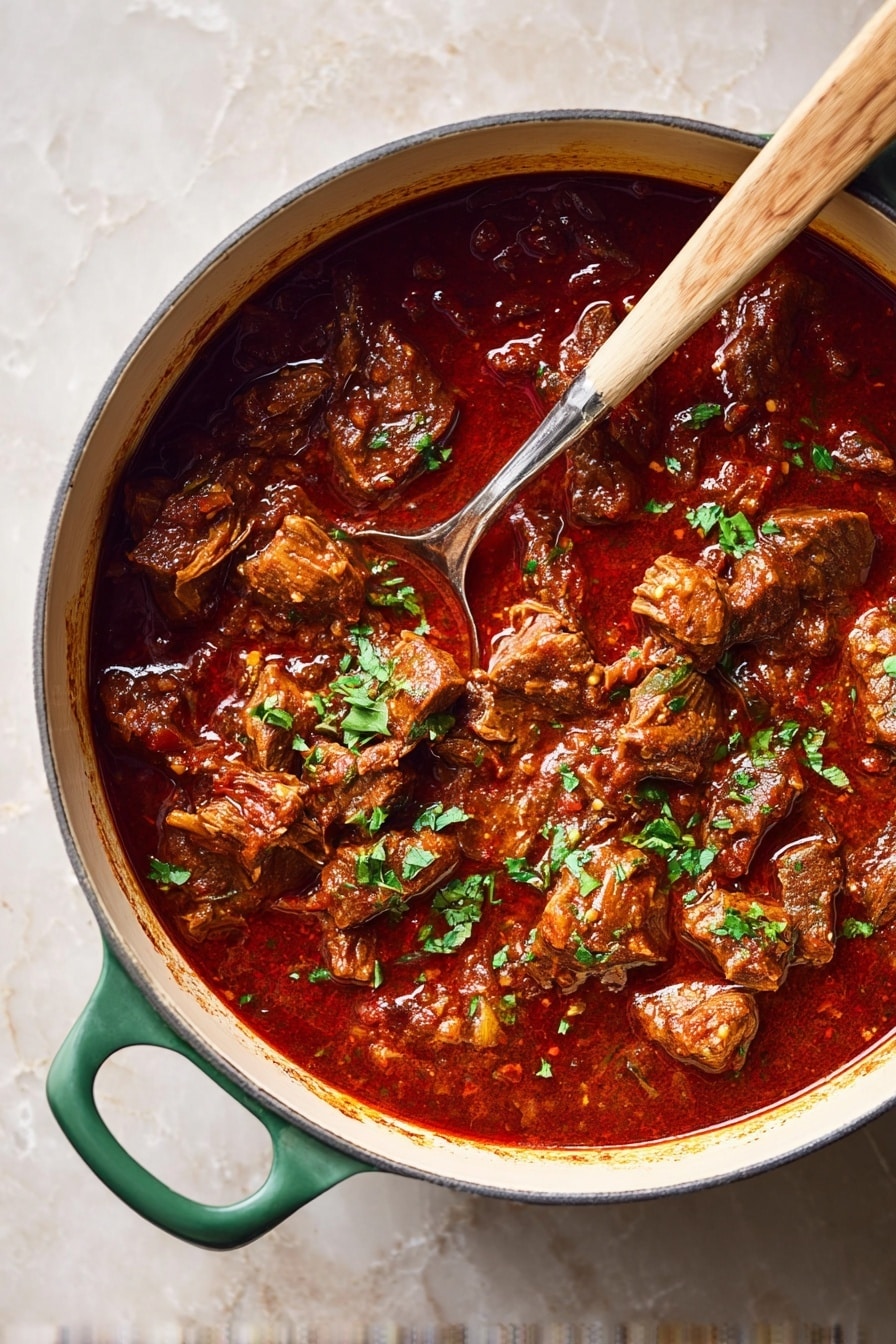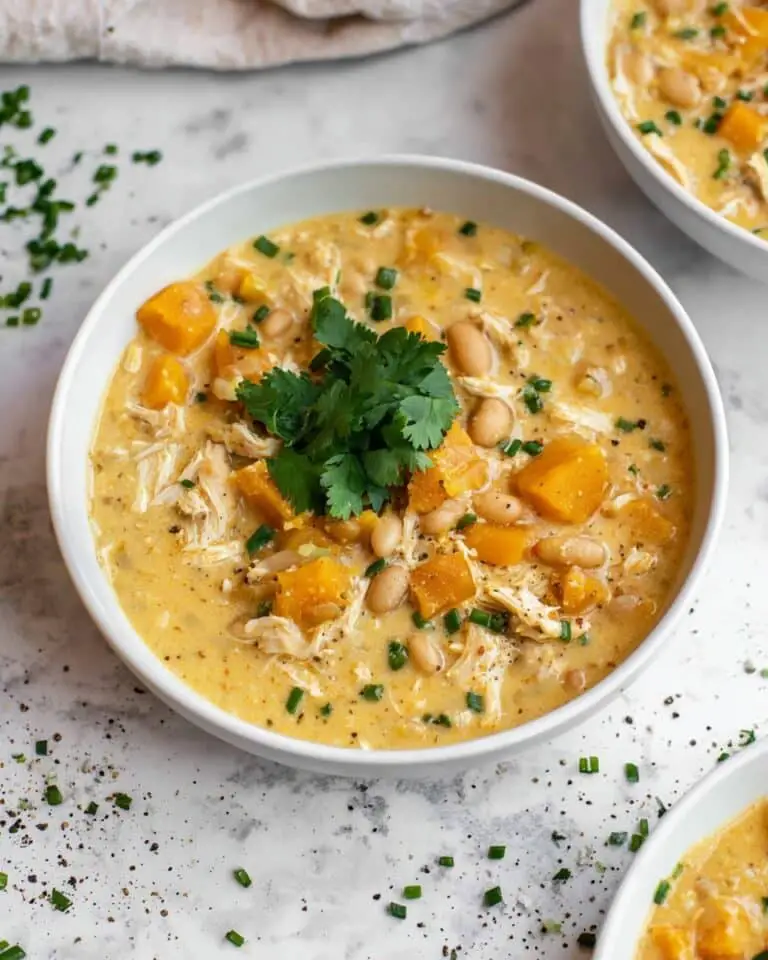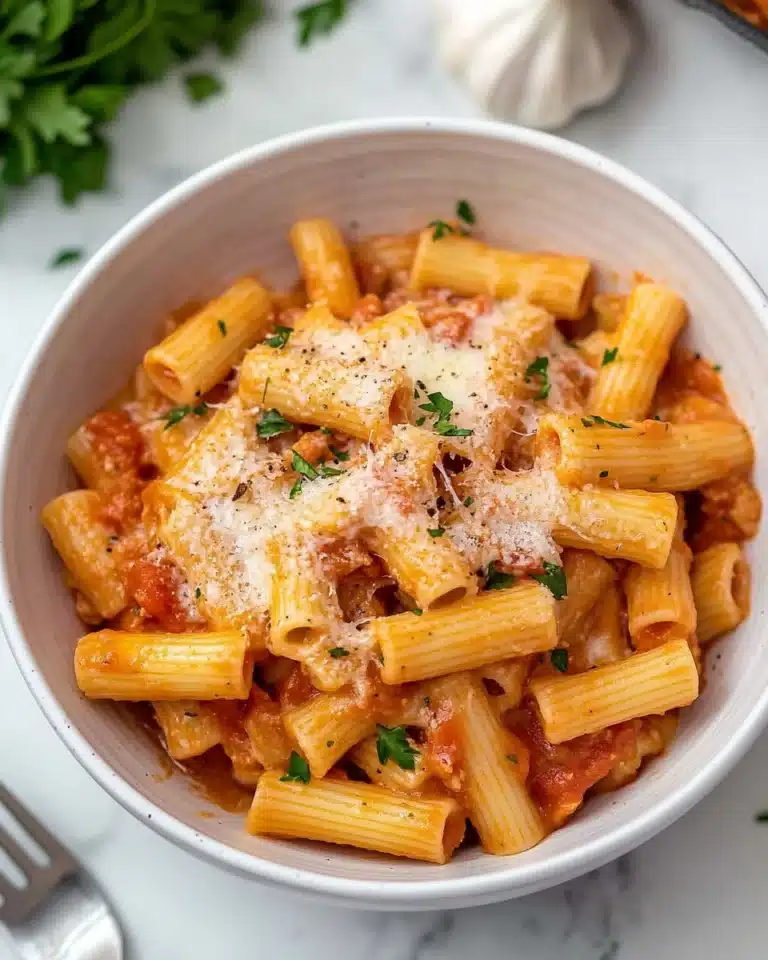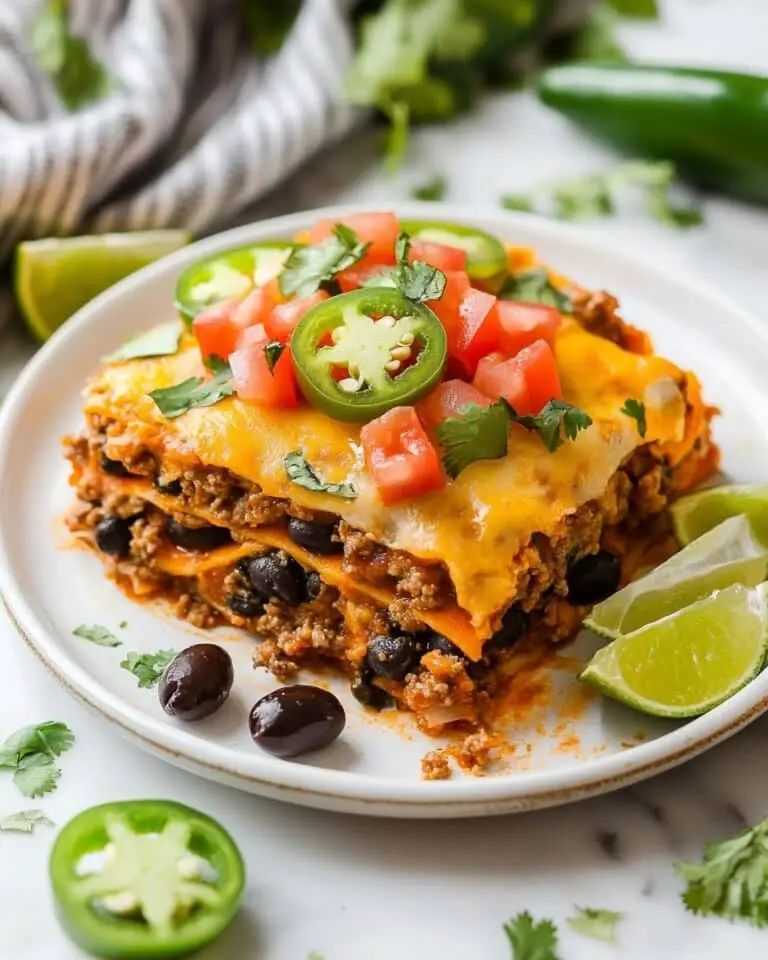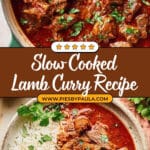If you’re looking to bring some authentic warmth and deep aromas to your dinner table, you’re in the right place! This Flavors of the Middle East: Classic Lamb Curry Recipe is an absolute game-changer, packed with fragrant spices and tender lamb that just melts in your mouth. Whether you’re an experienced curry lover or just curious to explore rich Middle Eastern flavors, you’ll find this recipe easy to follow and incredibly satisfying. Trust me, once you try it, you’ll want to make it again and again!
Why You’ll Love This Recipe
- Rich Authentic Flavors: The blend of garam masala, turmeric, cumin, and cinnamon creates a classic Middle Eastern taste that’s both comforting and exotic.
- Tender, Melt-in-Your-Mouth Lamb: Slow simmering the lamb makes it unbelievably tender — perfect for impressing guests or a cozy family dinner.
- Simple Ingredients, Big Impact: You don’t need a cabinet full of exotic spices — just a few basics you might already have.
- Versatile Serving Options: Pair it with rice, naan, or even some Greek yogurt to balance those bold flavors.
Ingredients You’ll Need
Each ingredient plays a crucial role in building those signature flavors. I love that this recipe uses everyday staples and spices to create something that tastes like it’s been simmering for hours in a bustling Middle Eastern kitchen.
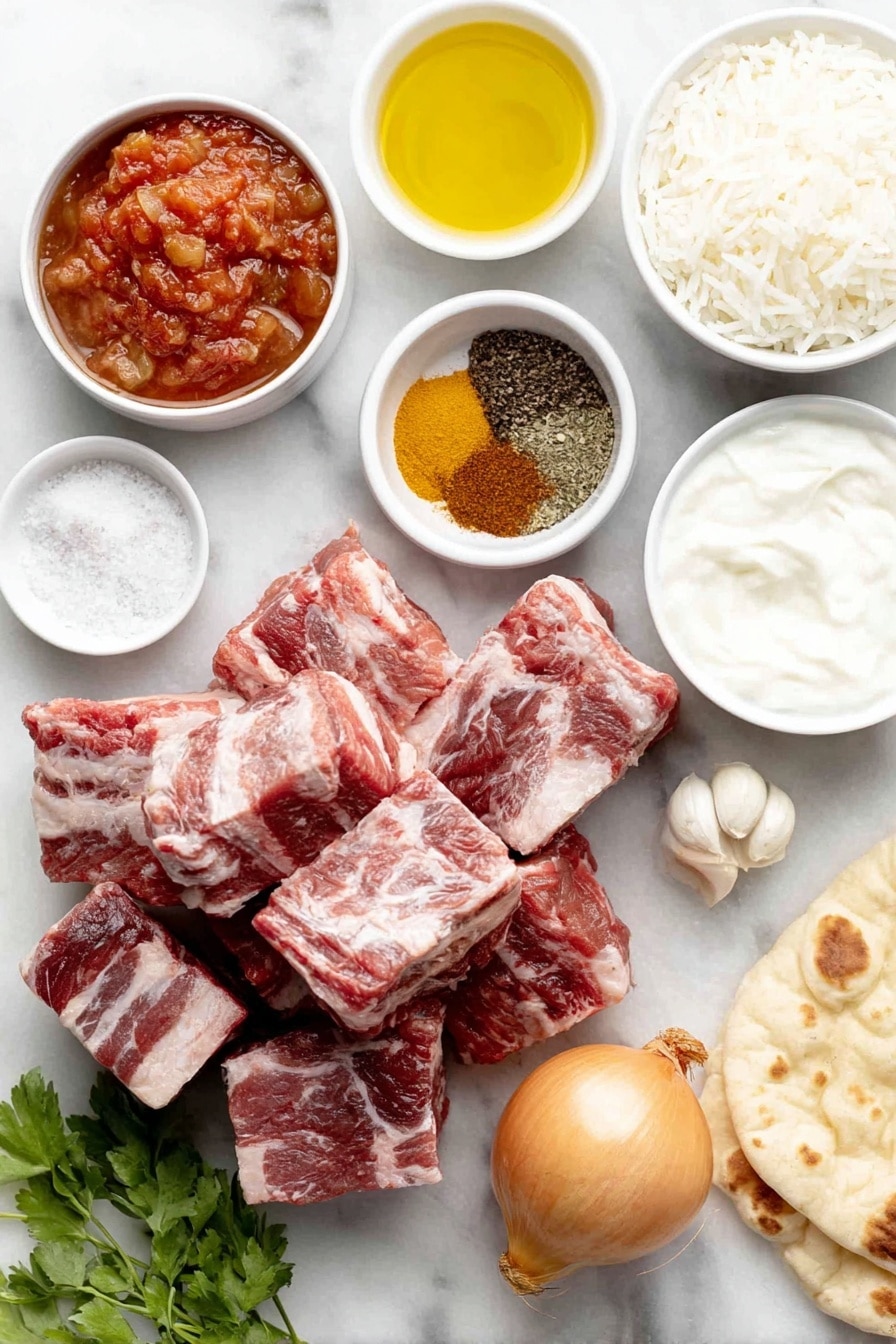
- Lamb shoulder: Choose well-marbled cuts for juicy, tender results after slow cooking.
- Black pepper: Freshly cracked gives the best aroma and depth.
- Kosher salt: Essential for seasoning meat and bringing out the spices’ richness.
- Extra-virgin olive oil: Adds a fruity undertone and helps brown the lamb beautifully.
- Yellow onion: Finely chopped to dissolve into the sauce and create natural sweetness.
- Garlic cloves: Minced fresh for that unmistakable savory kick.
- Garam masala: The heart of Middle Eastern spice blends; adds warmth and complexity.
- Cumin: Earthy and aromatic, pairs perfectly with lamb.
- Turmeric: Gives a subtle bitterness and that characteristic golden hue.
- Ground cinnamon: Just a touch brings a welcoming sweetness and spice.
- Crushed tomatoes: The base for a rich, tangy tomato sauce.
- Chicken stock: Adds body and depth to the curry sauce.
Variations
One of the things I love about this Flavors of the Middle East: Classic Lamb Curry Recipe is how easily you can tweak it depending on your mood or pantry. Feel free to experiment — that’s what cooking’s about!
- Add heat: I sometimes throw in a fresh chili or a sprinkle of cayenne if I’m craving a spicier kick.
- Vegetarian twist: Swap lamb with hearty chickpeas and sweet potatoes for a plant-based option that still captures the essence.
- Richer sauce: Stir in a spoonful of Greek yogurt or coconut cream at the end for a creamier texture.
- Herbs: Try adding fresh mint alongside cilantro for a refreshing finish.
How to Make Flavors of the Middle East: Classic Lamb Curry Recipe
Step 1: Season and Sear the Lamb
Start by seasoning your lamb shoulder pieces with freshly cracked black pepper and most of the kosher salt — I usually save a little salt for later to season the sauce. Heat your olive oil in a large Dutch oven over medium-high heat until it shimmers, then brown the lamb in batches. Try not to overcrowd the pot, so each piece gets a nice golden crust. This step locks in flavor, so don’t rush it. It should take around 15 minutes total. Once browned, set the lamb aside on a plate.
Step 2: Build the Flavor Base
Using the same pot, add your finely chopped onions and cook until soft and translucent — about 5 minutes. This forms the sweet backbone of your curry. Next, add minced garlic and stir for about a minute until fragrant. Then mix in the garam masala, cumin, turmeric, cinnamon, and the remaining salt. Stir everything together so the spices toast slightly and release their oils — this is where the magic happens!
Step 3: Add Tomatoes, Stock, and Simmer
Pour in the crushed tomatoes and chicken stock, stirring to combine. Return the lamb to the pot, nestling it into the sauce. Bring everything to a gentle simmer, then reduce the heat to low and cover. This slow cooking stage is how the lamb gets tender and soaks up those Middle Eastern flavors. Plan to let it cook for 1½ to 2 hours, stirring every now and then to prevent sticking. The aroma filling your kitchen at this point is one of my favorite cooking moments.
Step 4: Thicken the Sauce and Finish
After the lamb is wonderfully tender, remove the lid and let the curry simmer uncovered for about 20 minutes. This helps thicken the sauce to a luscious consistency. Keep an eye on it, and if a layer of fat rises to the top, skim it off for a cleaner bite — but it’s optional depending on your preference. Once the sauce looks rich and glossy, it’s ready!
Pro Tips for Making Flavors of the Middle East: Classic Lamb Curry Recipe
- Slow and Steady Wins: Don’t rush the simmering — the low heat tenderizes the lamb beautifully, releasing all those deep flavors.
- Spice Freshness Matters: I learned the hard way that using old spices dulls the flavor; try to use fresh garam masala and cumin for the best taste.
- Don’t Skip Browning: The caramelized crust on the lamb adds fantastic depth to your curry, so take your time on this step.
- Adjust Salt Gradually: Season as you go — it’s easier to add more salt toward the end than to fix an overly salty curry.
How to Serve Flavors of the Middle East: Classic Lamb Curry Recipe
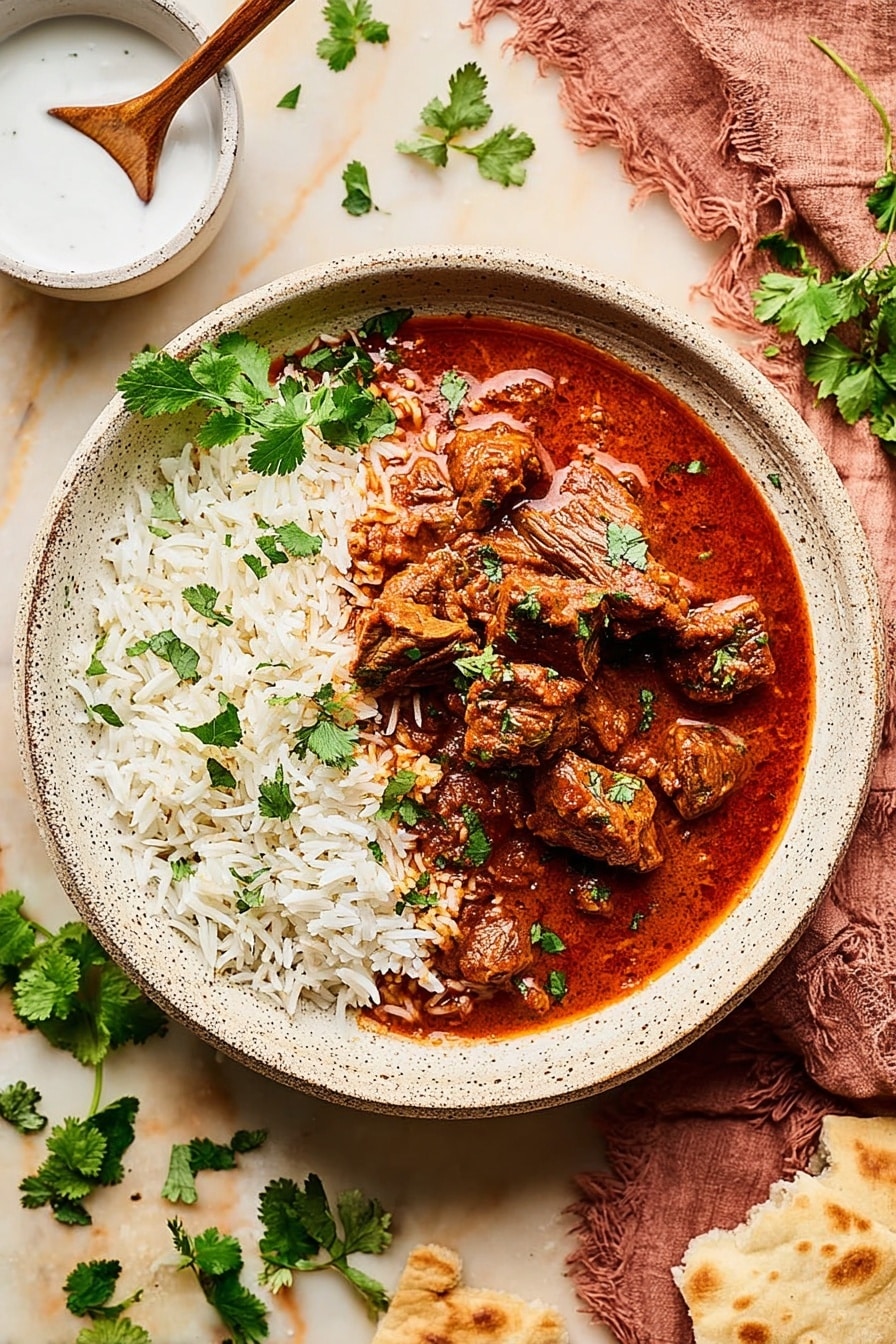
Garnishes
I’m a big fan of garnishing with fresh minced cilantro and a dollop of plain Greek yogurt. The cilantro adds a bright herbal contrast while the yogurt cools down the spices — you’ll find these little touches balance the richness beautifully. Sometimes, I also like a few toasted pine nuts on top for some crunch.
Side Dishes
This curry shines paired with fluffy cooked basmati rice and warm naan bread. The rice soaks up the sauce perfectly, and naan is excellent for scooping. If you want to get a bit fancy, a side of roasted vegetables like cauliflower or eggplant complements the dish well.
Creative Ways to Present
For special dinners, I’ve served this curry in individual bowls placed inside mini earthenware tagines to give that authentic Middle Eastern vibe. You could also layer the curry over a bed of saffron rice and garnish with toasted almonds and pomegranate seeds for a stunning presentation that’s sure to wow your guests.
Make Ahead and Storage
Storing Leftovers
Leftovers keep amazingly well in an airtight container in the fridge for up to 3 days. The flavors actually deepen overnight, so I often find the curry tastes even better the next day — perfect for easy lunches or dinner on busy nights.
Freezing
I’ve frozen this curry several times, and it holds up beautifully. Just cool it completely, then freeze in portions. When you’re ready to eat, thaw overnight in the fridge and reheat gently on the stove. Try to avoid microwaving directly from frozen as it can dry out the lamb.
Reheating
When reheating, I prefer to warm it slowly over low heat, adding a splash of water or stock if the sauce feels too thick. Stir often to prevent sticking and maintain that luscious texture. Reheated with a fresh sprinkle of cilantro and a squeeze of lemon juice, it tastes just like freshly made.
FAQs
-
Can I use other cuts of lamb for this recipe?
Absolutely! While lamb shoulder is ideal for its fat content and tenderness after slow cooking, lamb shanks or leg can work too. Just be mindful of adjusting the cooking time to make sure the meat becomes tender and flavorful.
-
What can I substitute if I don’t have garam masala?
If you don’t have garam masala on hand, you can use a mix of ground coriander, cumin, cinnamon, and a pinch of cardamom to mimic its warm, complex flavor. Alternatively, many stores now carry pre-made spice blends labeled as Middle Eastern or curry blends that work well too.
-
Is this curry very spicy?
This particular recipe balances warm spices without much heat, making it approachable for most palates. If you want to add some heat, try adding chili flakes or fresh chilies according to your taste.
-
How do I prevent the lamb from becoming tough?
The key is low and slow cooking. Keeping the heat low and cooking the lamb slowly for at least 1½ hours allows the connective tissue to break down, resulting in tender meat. Avoid high heat or rushing this step.
Final Thoughts
I absolutely love how this Flavors of the Middle East: Classic Lamb Curry Recipe brings a comforting, aromatic experience to my kitchen and my family’s dinner table. There’s something truly special about slow-cooked lamb blended with those fragrant spices — it feels like a hug in a bowl. I hope you’ll enjoy making and sharing this recipe as much as I do! Once you get the hang of it, it’s incredibly rewarding and perfect for any occasion, from weeknight dinners to entertaining friends. Give it a try, and I’d bet it’ll become a new favorite in your recipe rotation.
Print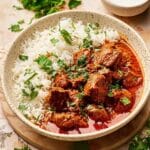
Flavors of the Middle East: Classic Lamb Curry Recipe
- Prep Time: 10 minutes
- Cook Time: 2 hours 30 minutes
- Total Time: 2 hours 40 minutes
- Yield: 6 servings
- Category: Main Dish
- Method: Stovetop
- Cuisine: Indian
Description
This hearty Lamb Curry recipe features tender lamb shoulder slow-cooked in a richly spiced tomato and chicken stock sauce, infused with warm spices like garam masala, cumin, turmeric, and cinnamon. Perfectly paired with basmati rice, naan bread, and a cooling dollop of Greek yogurt, this curry is a comforting and flavorful meal that serves six.
Ingredients
Main Ingredients
- 3 pounds lamb shoulder, cut into 6-inch pieces
- 1 teaspoon freshly cracked black pepper
- 3 teaspoons kosher salt
- 2 tablespoons extra-virgin olive oil
- 1 medium yellow onion, finely chopped
- 4 garlic cloves, minced
- 2 teaspoons garam masala
- 2 teaspoons cumin
- 2 teaspoons turmeric
- ¾ teaspoon ground cinnamon
- 1 (28-ounce) can crushed tomatoes
- 1 cup chicken stock
For Serving (Optional)
- Cooked basmati rice
- Warmed Naan bread
- Plain Greek yogurt
- Minced fresh cilantro
Instructions
- Season the Lamb: Pat the lamb shoulder pieces dry and season them evenly with freshly cracked black pepper and 2 teaspoons of kosher salt to enhance the meat’s flavor before cooking.
- Brown the Lamb: Heat the extra-virgin olive oil in a large Dutch oven over medium-high heat. Once the oil is hot and shimmering, brown the lamb pieces in batches, turning to sear all sides evenly. This process should take about 15 minutes total. Transfer browned lamb to a plate and set aside.
- Sauté Aromatics: In the same pot, add the finely chopped yellow onion and cook while stirring frequently until softened and translucent, about 5 minutes. Add the minced garlic and cook for 1 minute more until fragrant.
- Add Spices and Liquids: Stir in the garam masala, cumin, turmeric, ground cinnamon, and the remaining 1 teaspoon kosher salt. Mix well until the spices are evenly combined with the onions and garlic. Pour in the crushed tomatoes and chicken stock, stirring to incorporate all ingredients thoroughly.
- Simmer the Curry: Return the browned lamb to the pot and bring the mixture to a gentle simmer. Reduce the heat to low, cover, and cook, stirring occasionally, until the lamb is very tender, approximately 1½ to 2 hours.
- Thicken the Sauce: Remove the lid and continue simmering the curry uncovered for about 20 minutes to allow the sauce to reduce and thicken slightly. Optionally, skim off any excess fat that rises to the surface for a leaner dish.
- Serve: Ladle the lamb curry over cooked basmati rice, and accompany with warmed naan bread, a dollop of plain Greek yogurt, and a sprinkle of minced fresh cilantro for added freshness and flavor.
Notes
- For a richer flavor, consider marinating the lamb shoulder in the spices and some yogurt for a few hours before cooking.
- You can substitute chicken stock with vegetable stock for a different depth of flavor or to make it suitable for certain dietary preferences.
- If you prefer less heat, adjust the amount of garam masala according to your taste as it can vary in spice level.
- Skimming off the fat at the end makes the curry less greasy but may also reduce some buttery richness.
- This curry can be made a day ahead; the flavors deepen nicely after resting overnight in the refrigerator.
- Leftovers keep well refrigerated for up to 3 days and can be frozen for up to 2 months.
Nutrition
- Serving Size: 1 serving (approx. 1/6 of recipe)
- Calories: 480
- Sugar: 8g
- Sodium: 640mg
- Fat: 25g
- Saturated Fat: 7g
- Unsaturated Fat: 16g
- Trans Fat: 0g
- Carbohydrates: 18g
- Fiber: 5g
- Protein: 42g
- Cholesterol: 130mg

